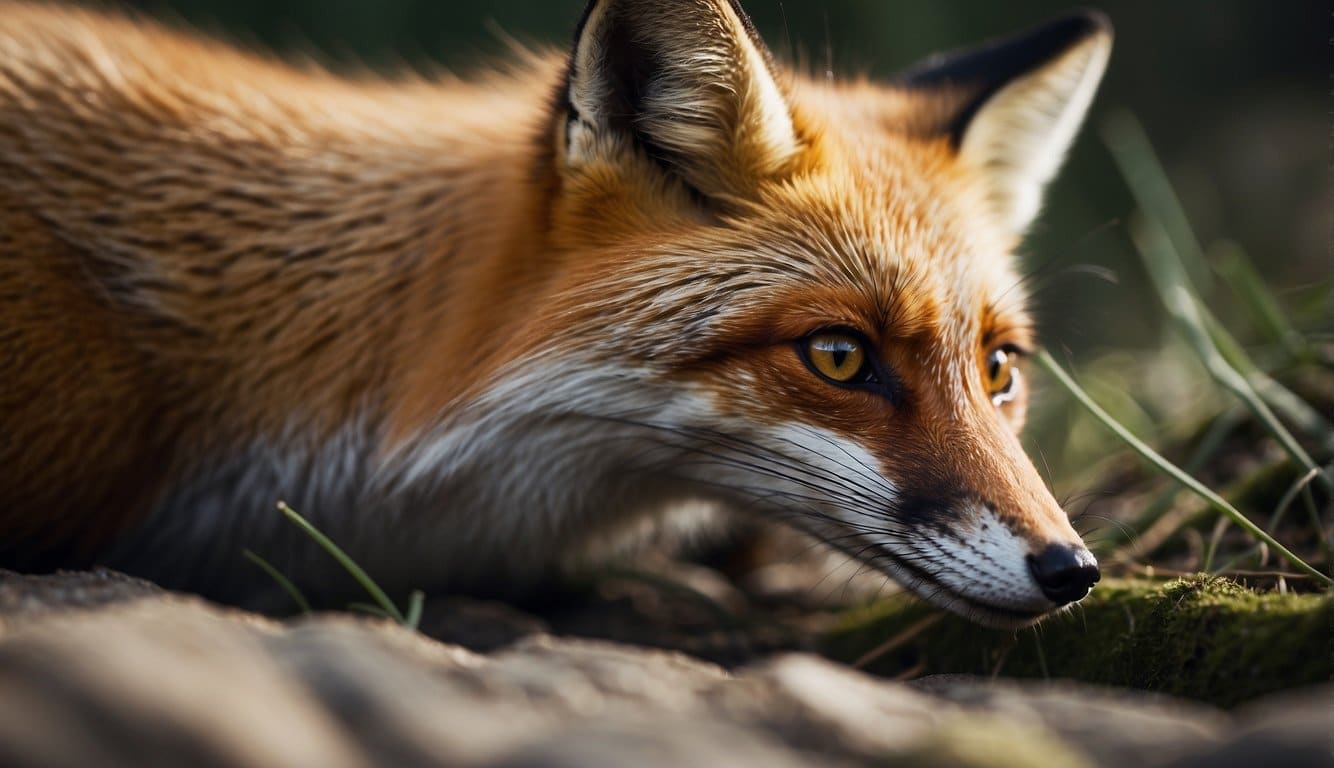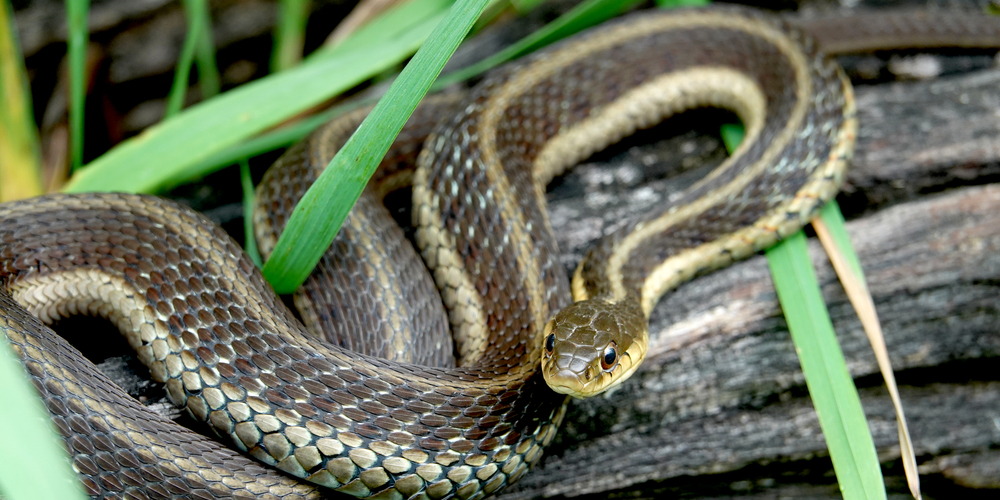What Foxes Eat
In exploring the culinary habits of foxes, it’s essential to know that these mammals are not fussy eaters. Their diet is opportunistic and highly varied, but there are some consistencies in what they include in their meals:
- Small mammals: Foxes frequently prey on rodents, such as mice and voles, which comprise the bulk of their diet.
- Birds: These canny creatures also snatch birds when the opportunity arises.
- Insects and worms: When larger prey is scarce, foxes will forgo dignity and dig for insects and earthworms.
- Fruits and Vegetables: Not confined to carnivorous choices, foxes will indulge in vegetation, particularly fruits like berries.
Regarding the particular question of whether foxes eat snakes, various specific sources highlight that this scenario depends on both the species of fox and the availability of snakes in the region.
Fox species like the red fox (Vulpes vulpes) are known to eat snakes, when they can catch them.
Here’s a snapshot of a fox’s dietary preferences:
- Primary Foods:
- Rodents
- Rabbits
- Insects
- Secondary Foods:
- Birds
- Eggs
- Fruits
One thing to note is that foxes adapt their diet to what is available in their environment.
If you live in an area rife with snakes, such as grass snakes or adders in the UK, it is plausible to consider that the local fox population may include these reptiles in their diet when they can. However, they generally prefer prey that poses less risk and is easier to catch.
Fox Predatory Behavior
Foxes exhibit a range of specialized behaviors that enhance their ability to successfully hunt and capture prey, including various species of snakes.
Hunting Techniques
- Adaptability: You’ll find that foxes are highly adaptable hunters, capable of employing different techniques based on the environment and the prey they are targeting.
- Pounce: A signature move of the fox is the pounce; they use this technique to catch snakes by surprise.
Prey Detection
- Hearing: A fox’s sharp sense of hearing allows it to detect prey, such as snakes, even when they are obscured by grass or underbrush.
- Olfactory Skills: Your senses would be envious of a fox’s olfactory ability. They can smell snakes and other prey effectively, which is paramount in environments where visual detection is challenging.
Foxes combine these refined predatory skills to navigate and thrive in their habitats, making them successful opportunistic hunters.
Snakes as Prey
In exploring the dietary habits of foxes, snakes emerge as a noteworthy component. Depending on the region and species, foxes exhibit the ability to adapt and include various snakes in their diet.
Types of Consumed Snakes
Foxes are adept at including an array of snake species in their prey repertoire. Here are specific types of snakes that are often on the menu:
- Garter Snakes: Commonly found and hunted by foxes, especially in North American environments.
- Rat Snakes: These snakes serve as a significant source of food in areas where they coexist with fox species.
- Venomous Snakes: Although riskier to hunt, certain fox species are known to occasionally prey on venomous snakes when other food sources are scarce.
Nutritional Value
Foxes benefit nutritionally from consuming snakes, as they provide:
- Protein: Snakes are an excellent source of lean protein, essential for muscle development and energy.
- Fatty Acids: While snakes are generally low in fat, they contain fatty acids that can be beneficial to a fox’s diet.
- Vitamins and Minerals: Depending on the snake’s diet, they can also offer vitamins like vitamin A, as well as minerals such as calcium.
Each snake consumed becomes a valuable part of the fox’s nutritional ecosystem, contributing to their survival and health in the wild.
Fox-Snake Interactions
Foxes and snakes cross paths in various environments, leading to interspecies interactions that are crucial for their survival. As you explore their encounters, you’ll learn about the fascinating defenses snakes have evolved and how geographical differences influence these interactions.
Defensive Strategies of Snakes
When a snake encounters a fox, its survival hinges on the effectiveness of its defense mechanisms. These strategies are:
- Camouflage: Many snake species have evolved patterns that blend into their natural habitat, making them less visible to predators like foxes.
- Warning Signals: Some snakes will hiss, rattle, or display other warning signs to deter a fox from attacking.
- Venom: Several species are equipped with venom which they use as a last resort to protect themselves from being consumed.
- Escape Tactics: A quick retreat or hiding can be a snake’s go-to option to avoid confrontation with a fox.
Geographical Variations
The likelihood of a fox preying on a snake can vary drastically by region:
- In the United Kingdom, where snake species are fewer, foxes might occasionally consume the common adder or the grass snake (What’s On a Fox’s Menu?).
- Desert Areas: Here, foxes may more frequently encounter and eat snakes due to the scarcity of other food sources.
- Forested Regions: The dense vegetation can hide snakes effectively, reducing the interactions with foxes.
Frequently Asked Questions
Exploring the dynamics between foxes and snakes can provide fascinating insights into their interactions in the wild. Here, you’ll find detailed responses to some of the most common inquiries regarding whether these cunning mammals include serpents in their diet.
Are foxes known to hunt snakes?
Yes, foxes are known to consider snakes as prey, and their opportunistic hunting behavior means they can and will eat snakes when the opportunity arises.
Is it common for foxes to consume reptiles?
While foxes have a varied diet, it is relatively common for them to consume reptiles, including snakes, especially when these are readily available in their habitat.
What type of snakes do foxes eat?
Foxes aren’t picky eaters and have been witnessed consuming various snake species ranging from nonvenomous garter and rat snakes to others, depending on geographical location and species availability.
Do foxes have natural predators?
Foxes do face dangers in the wild; they have several natural predators including wolves, eagles, and humans who may hunt them for fur or as part of population control measures.
What constitutes the primary diet of a fox?
The primary diet of foxes is highly diverse. They are omnivores and their diet typically includes:
- Small mammals like rodents
- Birds
- Insects
- Fruits
- Berries
Are there instances of foxes eating venomous snakes?
Instances of foxes eating venomous snakes are uncommon but not unheard of. However, foxes are generally cautious and may avoid aggressive, poisonous snakes when possible.
Last update on 2024-05-03 / Affiliate links / Images from Amazon Product Advertising API






